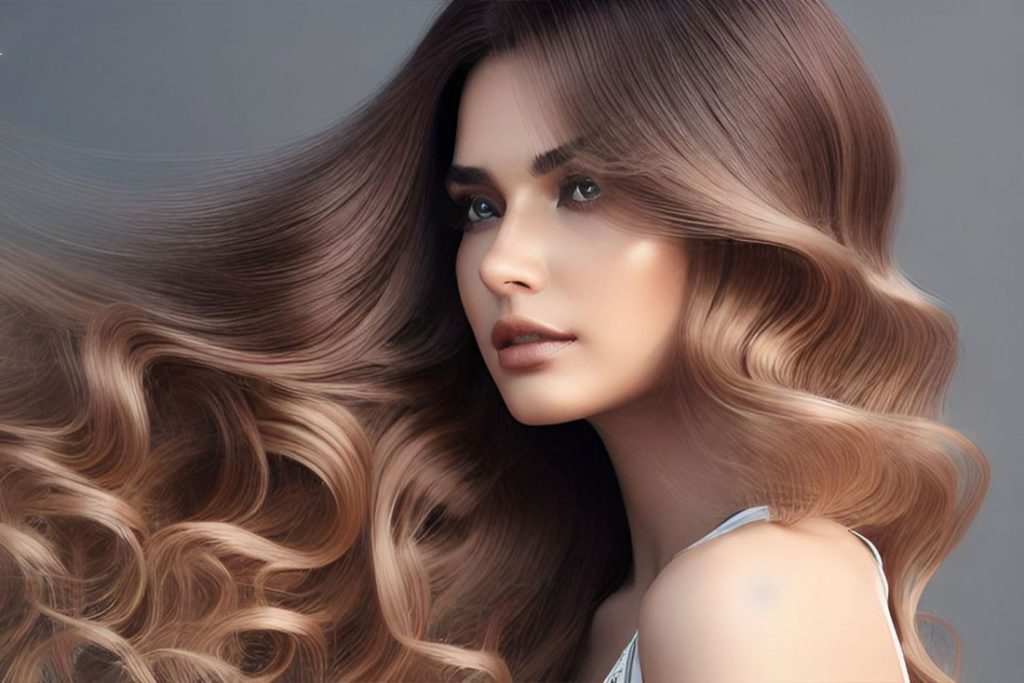Principle 3 of Hair Design: Rhythm
In the realm of art, rhythm evokes a sense of movement, a dance of elements that captures the beholder’s attention. As with music or dance, where rhythm dictates the flow and energy, hair design also harnesses the power of rhythm to bring life, dynamism, and individuality to a style. Understanding the principle of rhythm can elevate a hair design from the mundane to the sublime, creating visual melodies that resonate deeply with observers.

Understanding Rhythm in Hair Design
Rhythm in hair design isn’t about audible beats or metrical patterns, but rather visual cues that suggest a certain flow or movement. It sets the pace, leading the eye through the design in predictable or surprising ways, creating a sensory experience akin to listening to a melody.
The Spectrum of Rhythmic Movement
1. Fast Rhythm
Fast rhythm in hair design denotes a sense of urgency, energy, and vibrancy.
- Visual Representation: Tight, spiraled curls that appear to bounce off the scalp represent a fast rhythm. They add a plethora of volume and seem to move with an energy of their own.
- Implications: Such designs are often attention-grabbing and exude a youthful exuberance. They can be perfect for individuals who possess a vivacious personality and wish to showcase their zest for life.

2. Slow Rhythm
On the opposite end of the spectrum, a slow rhythm exudes a calm, serene, and controlled aura.
- Visual Representation: Think of expansive shapes, gentle cascading waves, or long, flowing locks that gracefully fall over the shoulders.
- Implications: Slow rhythmic designs often radiate elegance and maturity. They can be associated with sophistication, making them an excellent choice for formal occasions or individuals who prefer a classic, timeless look.

Rhythm as a Design Catalyst
Rhythm acts as a catalyst, influencing other design elements and principles:
- Volume and Texture: Rhythm directly correlates with volume and texture. For instance, fast rhythmic designs often incorporate a lot of volume and texture, while slow rhythms might emphasize smoother textures and controlled volume.
- Balance and Proportion: The rhythm of a hair design can help achieve balance and proportion. Fast, energetic designs might be balanced with slower, more subdued sections, ensuring the overall look remains harmonious.
- Color and Highlights: Rhythm can also be enhanced or influenced by hair color. Strategic placement of highlights or color can accentuate the rhythmic flow, adding depth, dimension, and movement to the design.
Creating with Rhythm in Mind
For hairstylists, understanding rhythm is essential. While some clients might come with a clear idea of what they want, others look to their hairstylist for guidance. Knowing how to introduce and manipulate rhythm can assist in crafting designs tailored to an individual’s personality, facial structure, and lifestyle. For instance, a professional might opt for a style with a slower rhythm for a more polished look, while a performer or artist might gravitate towards a fast, dynamic rhythm to showcase their creative spirit.
Conclusion
Rhythm, while often intangible, is a palpable force in hair design. It’s the pulse that breathes life into a style, the movement that captivates the observer. Whether it’s the vivacity of tight curls or the elegance of loose waves, rhythm dictates the energy and flow of a design. For hairstylists, mastering the principle of rhythm is akin to a musician mastering tempo—a skill that, when honed, can transform a simple tune into a symphony.






